by Alessandra Ressa
Notwithstanding the economic crisis that is relentlessly making it very hard for tourism to survive Covid-19, Trieste seems to be currently living an idyllic, if paradoxical, time for new businesses such as hotels and restaurants.
The latest of such entrepreneurial investments regards the historical and much neglected Park Hotel Obelisco, which has stood abandoned along the main road to Opicina for almost 40 years.
After a long series of deserted auctions, it appears that this well-known Triestine iconic hotel, today in a sorrowful state of neglect and for years shelter to the homeless and target for vandals, has finally gained new ownership. Once the exclusive retreat for Trieste’s intellectual elite and aristocracy, Hotel Obelisco may become yet another lucrative retirement home.
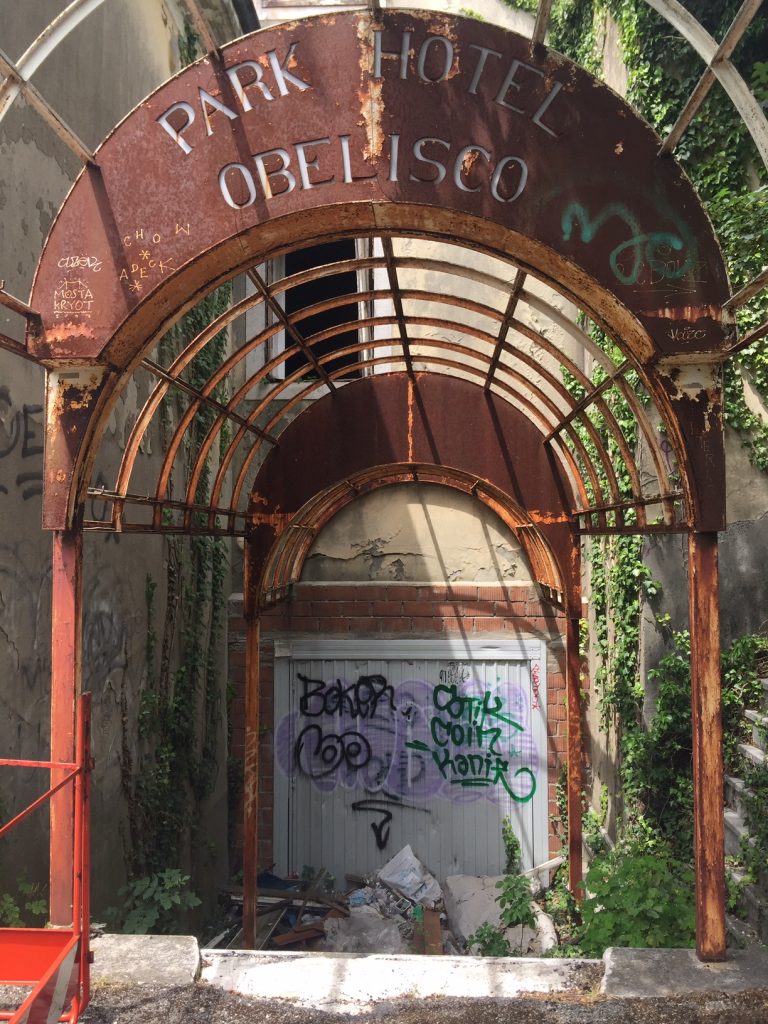
Although this is not official yet (the court in Milan hasn’t formalized the final closing), the business group Andretta may have won, with an offer of 1,950,000 euro. None of the other participants at the online auction, which took place last September, offered a higher bid so far.
The Andrettas are a family business from Friuli Venezia Giulia who own several hotels, camping sites, restaurants and mountain huts all over the region. In Trieste, they own hotel Città di Parenzo.
According to Trieste newspaper Il Piccolo, the Andretta group is considering three options for the property; restore it to its original tourism purpose, convert it into residential apartments, or turn it into yet another luxury retirement home.
This last alternative would probably turn out to be the most lucrative, as the structure, with its vast wooden property and sports facilities, would be a far better choice for well-off families than the many gloomy city-center-located, overcrowded apartment buildings that have been turned into nursing homes.

Whatever the choice for the future, some of its glorious architectural past will hopefully be retained to remind us of the times when Park Hotel Obelisco was an exclusive retreat for the rich and intellectuals in town, thanks to the beautiful views of the gulf and the cool, healthy breeze of Carso, which made hot and humid summers more bearable for rich Triestini.
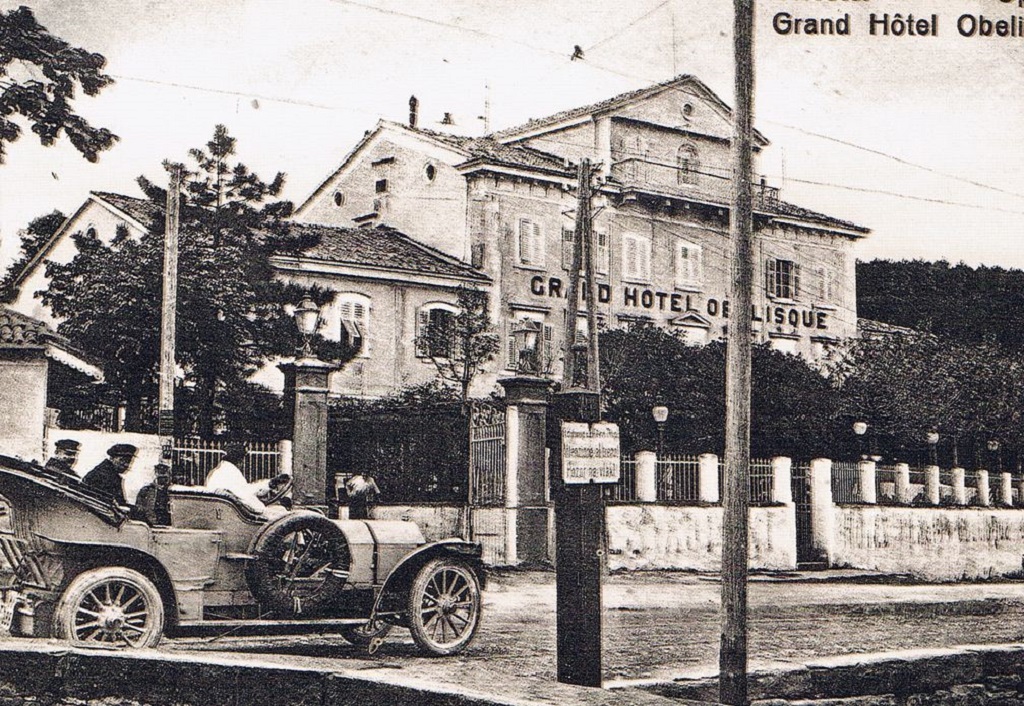
The first available written documents about the hotel are from the end of 1700. It was initially an osteria with stables where travelers could stop for a meal and rest their horses. Since then, it underwent many changes. It first became a coaching inn for travelers, imperial messengers, and mailmen traveling to and from Ljubljana, with rooms and traditional food. It belonged to the old Trieste family Daneu.
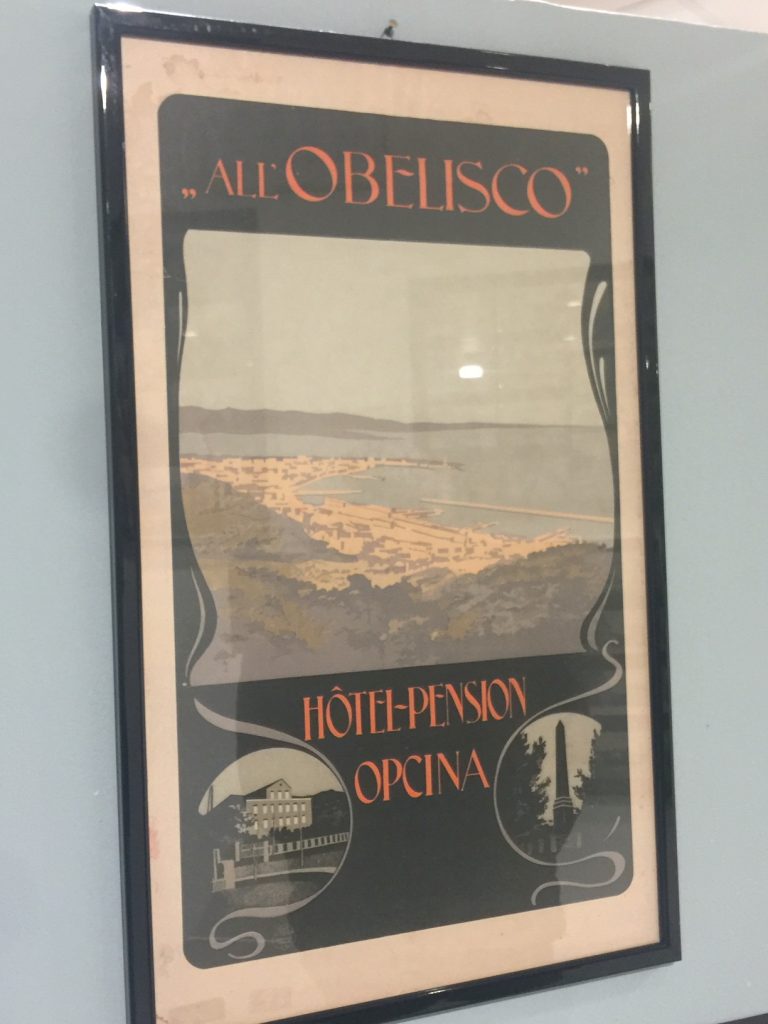
The inn at the time could accommodate 100 horses. Starting in 1873, when it finally received its license, it was renamed “Grand Hotel Obelisque,” in reference to the commemorative obelisk just across the street that was erected in 1850.
In those years, the explorer and British Consul in Trieste Sir Richard Francis Burton was accustomed to spend periods of time in Opicina. While staying at the hotel he worked on the translation of “Arabian Nights”, a milestone for international literature because it was the first translation ever of the popular collection of exotic tales. He often said he could find his inspiration looking at the sea and listening to nature from his room at the hotel, from where, he claimed, he could enjoy “the finest view in the world.”
Meanwhile, business was getting worse for the Daneu family. The recently built direct railway connecting Trieste to Vienna reduced the number of people, horses, and carriages passing through Opicina.
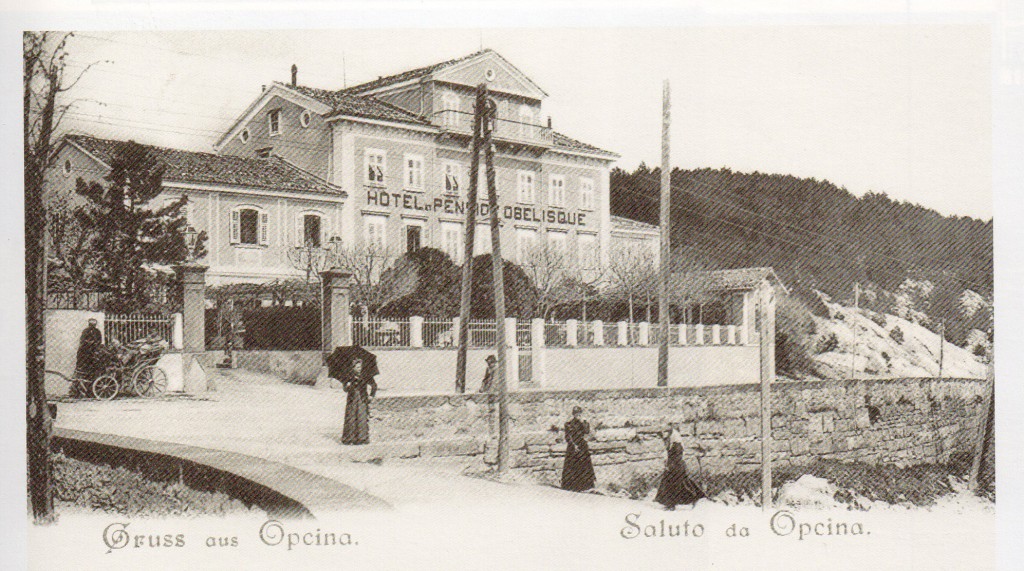
In 1901, after changing ownership a few times, the hotel modified its name to “Rinomata Stazione Climatica” (health spa), and was known as “La Svizzera dell’Adriatico” (Switzerland of the Adriatic). This was the first example of coping with times in style. New design and furniture, new customers, new mission. The property was no longer a restaurant and an inn, but a health resort.
It became an exclusive health and spa destination for respiratory diseases. It was believed to be a setting that was beneficial for people affected by tuberculosis and neurological diseases, but also the best place to cure depression and stress. Aurisina springs provided spa water, while 100 comfortable rooms were available for guests. To promote its reputation as a health resort, a doctor was kept on the premises at all times.
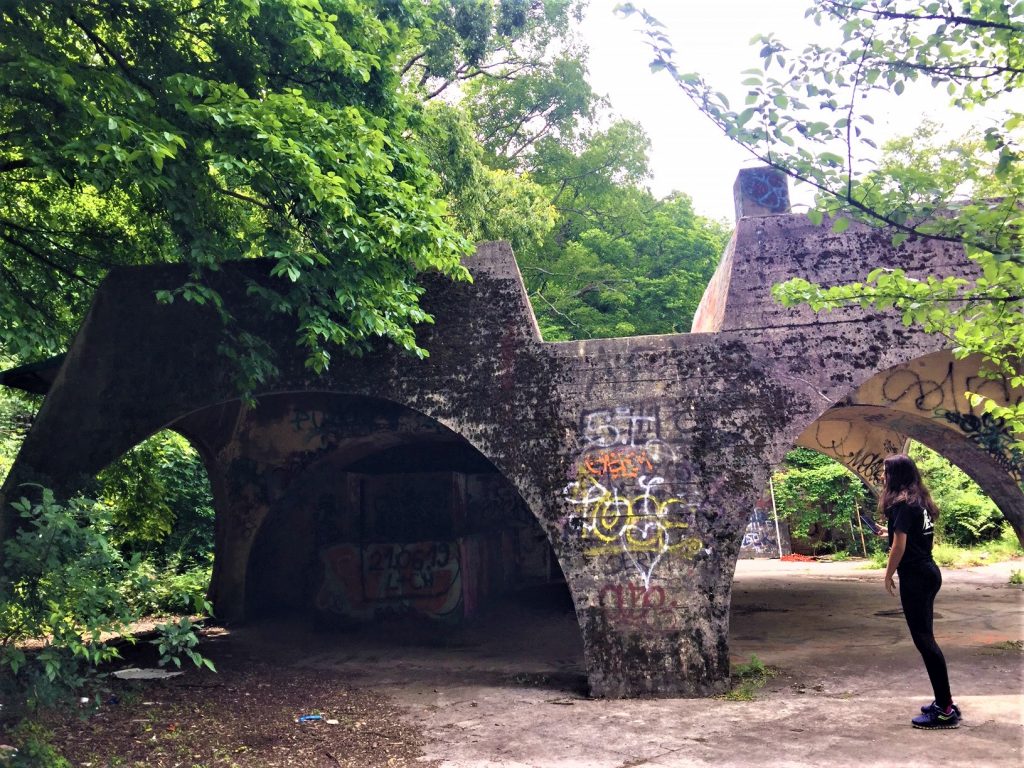
In 1911, modern acetylene light was introduced in the hotel. Immediately after that, it was connected to the city center by the electric tram. These two novelties, together with summer and winter skating rinks, very popular at the time, should have guaranteed a boost in business. However, the alarming long succession of owners from 1910 to 1950 meant that the hotel did not manage to enjoy financial stability at any time.
In 1931 the resort went under complete renovation, and again in 1950. The last, radical restyling for Hotel Obelisco was in 1970 by famous architect Gae Aulenti. It now became Park Hotel Obelisco.
The hotel was completely stripped of that retro old style that marked its fame and fortune, to be transformed into a velvety green and beige modern wonder with the latest fashionable 1970s deco, such as giant geometrical yellow chandeliers, burgundy and brown carpets to cover the old wooden floors, and a cutting-edge sports center featuring a swimming pool, tennis courts, an outdoor designer bar, and many other facilities that are today engulfed in thorny bushes and creepers.
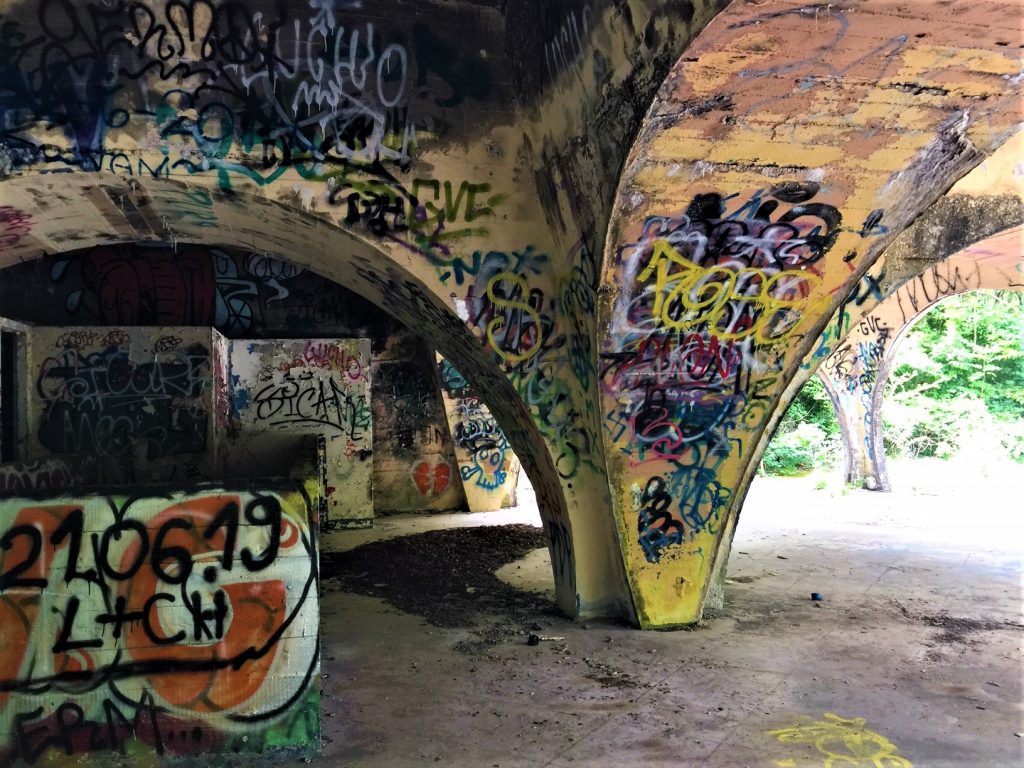
The 70s marked a decade of brief success. Trieste residents stormed the hotel at the weekends for parties, to play tennis, or to lay by the pool drinking Campari and soda while gossiping. Extremely popular among Triestini were Mardi Gras celebrations, where hundreds of people attended in their best Carnival costumes. Every year the theme of the party changed. Very popular themes were Cowboys and Indians, Hawaiians, Priests and Nuns, and Pirates. Hotel Obelisco lost its reputation as a curative spa to become a sports and party haven.

Bad management in the early 1980s and a lack of flexibility to keep up with the times caused fast decline, and by 1985 the Hotel shut its doors indefinitely. Since then, it has slowly but inexorably deteriorated. Stripped of all its expensive interior designs, it became a shelter for the homeless and camping grounds for drifters. Many fires have broken out inside the main building, while the surrounding facilities were little-by-little embraced by untended vegetation. It is a very spooky place to visit today, and, although abandoned for many decades, it is a private property. Because of its easy access, however, many people enjoy the thrill of walking along its abandoned alleys and buildings in ruin.

Former Park Hotel Obelisco stands by Strada Nuova per Opicina in front of the monumental obelisk by the popular Napoleonica trail. It enjoys spectacular views of Trieste and can be reached by bus n. 4 from Piazza Oberdan. The best way to visit the old hotel is by tram, that is, when and if Trieste’s beloved streetcar will be back in service.


























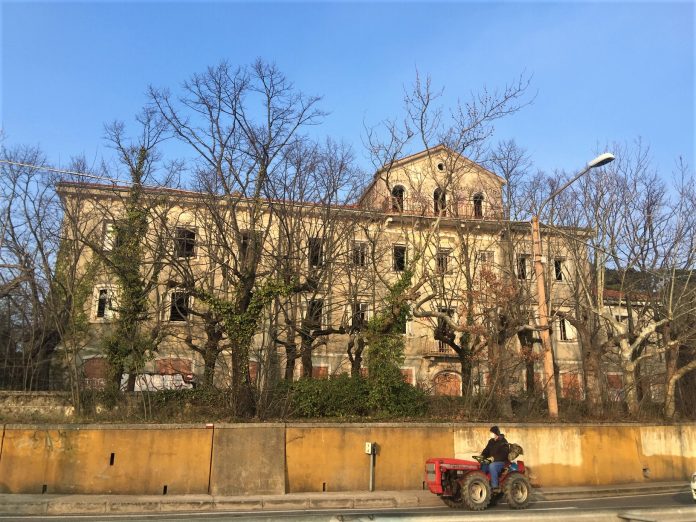




Fine and interesting reportage. Thank you.